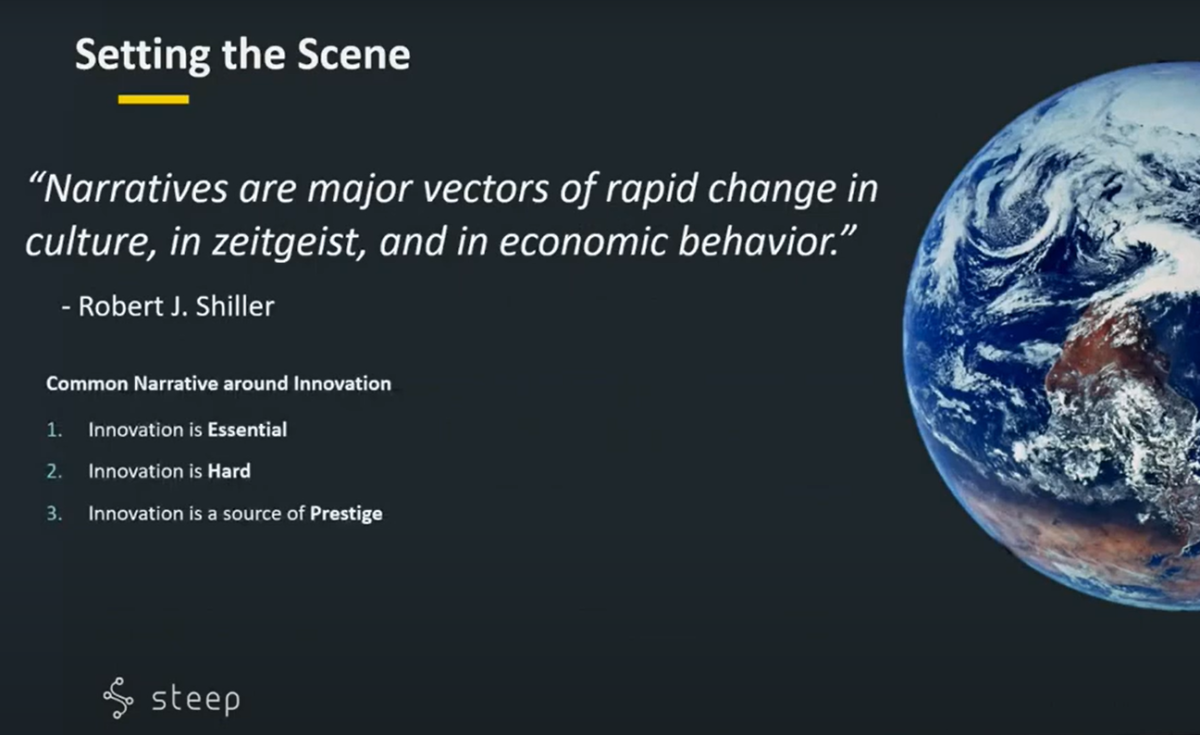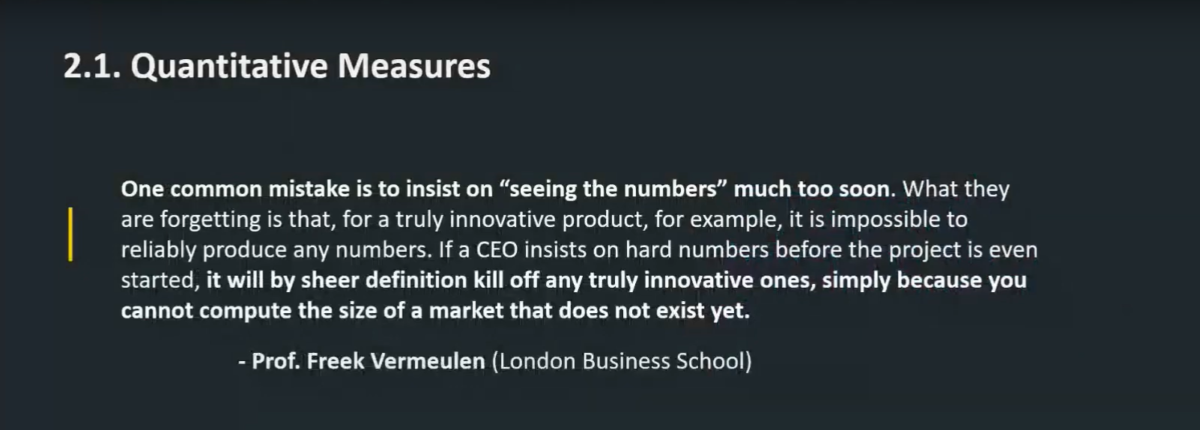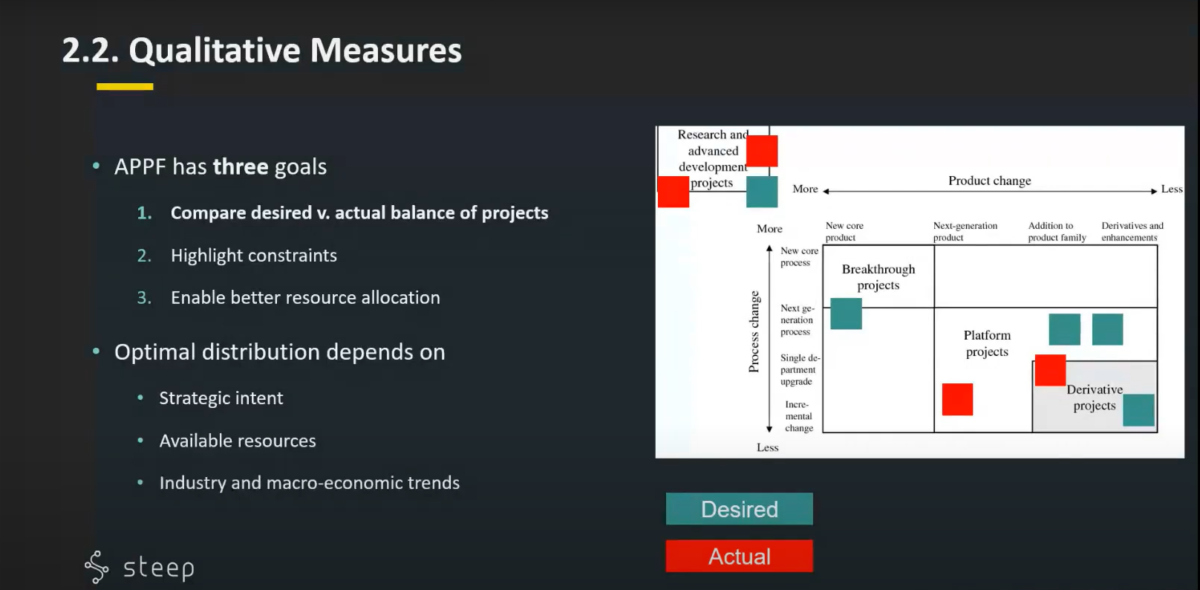Introduction
Ever found yourself in a heated boardroom debate, trying to convince key decision-makers to say “yes” to your innovation budget request? You’re not alone. In the world of innovation, proving Return on Investment (ROI) is often the most challenging part of the job. But what if we told you there’s a way to make this process less daunting and more successful?
In a recent webinar, we dove deep into the world of innovation budgeting and ROI estimation. We’ve distilled the key insights from that discussion into this article, aiming to equip you with the knowledge and confidence to secure that much-needed budget for your innovation projects.
Why Proving Innovation ROI is Crucial?
Innovation is the lifeblood of any forward-thinking organization. It’s the engine that drives growth, keeps us competitive, and ensures we’re always one step ahead of the curve. But innovation isn’t free. It requires investment, and that’s where things can get tricky.
Proving the ROI of your innovation projects is crucial for a couple of reasons. First, it provides a tangible measure of the value your projects are expected to bring to the organization. This is the language that your CFO and other key decision-makers understand and appreciate. Talking about language, make sure they get the definition of innovation right from the start!
Second, it helps to mitigate the perceived risk associated with innovation. Let’s face it, innovation can be a gamble. By providing a clear estimate of the expected ROI, you can help to alleviate concerns about the potential risks and reinforce the potential rewards.
In the next section, we’ll delve into the art of drafting an innovation budget, a critical step in proving your innovation ROI.

The Art of Drafting an Innovation Budget
Drafting an innovation budget is a bit like painting a masterpiece. It requires a delicate balance of art and science, creativity and pragmatism. But fear not, dear reader, for we’ve got some tips to help you create your budgeting magnum opus.
Firstly, understand that your innovation budget is more than just numbers on a spreadsheet. It’s a strategic tool that should help you prioritize your innovation projects, allocate resources effectively, and keep your innovation efforts on track.
Start by identifying your innovation goals. Are you looking to develop new products, improve existing ones, or perhaps disrupt your industry with groundbreaking ideas? Your goals will guide your budgeting process and help you allocate funds where they’re needed most.
Next, estimate the costs associated with each of your innovation projects. This includes direct costs like materials and labor, as well as indirect costs like overheads and administrative expenses. Don’t forget to factor in potential risks and contingencies. Innovation is inherently uncertain, and your budget should reflect that.
Finally, remember that your innovation budget is not set in stone. It should be flexible and adaptable, able to respond to changes in your business environment or strategic direction. Regularly review and update your budget to ensure it remains aligned with your innovation goals.
Estimating Innovation ROI: The Key Steps
Now that you’ve got your budget sorted, it’s time to tackle the elephant in the room: estimating your innovation ROI. This is a critical step in securing your innovation budget, as it provides a clear indication of the potential return on your innovation investments.
Start by identifying the potential benefits of your innovation projects. These could be financial, such as increased revenue or cost savings, or non-financial, such as improved customer satisfaction or enhanced brand reputation. Remember, not all benefits can be measured in dollars and cents, but they’re still important to consider.
Next, calculate the total cost of each project, including both direct and indirect costs. This will give you a clear picture of the investment required to bring your innovation projects to life.
Then, use these figures to calculate your expected ROI. This can be done using the formula: (Expected Benefits – Total Cost) / Total Cost. This will give you a percentage that represents the expected return on your investment.
Finally, present your ROI estimates in a clear and compelling way. Use graphs and charts to visualize your data, and be prepared to explain your calculations in simple, non-technical language. Remember, your goal is to convince your decision-makers that your innovation projects are worth investing in.
In the next section, we’ll explore different innovation budgeting methods and share insights on how to choose the right one for your organization.

Innovation Budgeting Methods: Which One is Right for You?
Just like there’s more than one way to skin a cat, there’s more than one way to budget for innovation. The trick is finding the method that best suits your organization’s needs and goals. Let’s take a look at a few of the most popular methods:
1. Top-down budgeting: This method starts at the top, with senior management determining the total budget for innovation. This budget is then distributed among the various innovation projects. This method is straightforward and ensures alignment with strategic goals, but it can also stifle creativity and flexibility.
2. Bottom-up budgeting: This method starts at the bottom, with individual project teams or departments proposing their own budgets. These are then consolidated into the overall innovation budget. This method encourages ownership and accountability, but it can also lead to budget inflation and misalignment with strategic goals.
3. Zero-based budgeting: This method involves starting each budgeting cycle from scratch, rather than basing the budget on previous cycles. This encourages efficiency and cost consciousness, but it can also be time-consuming and disruptive.
4. Portfolio budgeting: This method involves allocating the budget based on a portfolio of innovation projects. This allows for a balanced mix of projects, from safe bets to high-risk, high-reward ventures. This method encourages diversity and risk management, but it requires a mature innovation process and robust project evaluation capabilities.
Each of these methods has its pros and cons, and the best choice depends on your organization’s specific circumstances and strategic goals. In the webinar, we delve deeper into these methods and provide practical advice on how to choose and implement the right one for your organization.

Practical Advice for Innovation Managers
As an innovation manager, you’re the conductor of the innovation orchestra. You’re responsible for ensuring all the different parts come together to create a harmonious symphony of innovation. Here are some practical tips to help you in this role:
1. Foster a culture of innovation
Innovation should be part of your organization’s DNA, not just a buzzword. Encourage creativity, reward innovative ideas, and create an environment where failure is seen as a learning opportunity, not a disaster.
2. Communicate effectively
Keep your team, stakeholders, and decision-makers informed about your innovation projects. Share your successes, but also be honest about your challenges and failures.
3. Be data-driven
Use data to inform your decisions, from selecting innovation projects to allocating resources and evaluating performance. But remember, data is only as good as your ability to interpret and act on it.

4. Keep learning:
Innovation is a rapidly evolving field. Stay up-to-date with the latest trends, tools, and best practices. Attend webinars (like ours!), read industry reports, and network with other innovation professionals.
5. Success Stories – Your Secret Weapon
Success stories are your best friend when it comes to proving ROI. They’re the proof in the pudding, the evidence that your past projects have delivered real, tangible returns. So, don’t be shy about showcasing these victories – they’re your ticket to securing future budgets.
6. The Power of Quantification
Innovation is great, but without quantifiable results, it’s just a buzzword. So, whether it’s increased sales, cost savings, or improved customer satisfaction, make sure you’re measuring the impact of your projects. Remember, in the boardroom, numbers speak louder than words.
7. Benchmarks – Your Innovation Yardstick
How does your innovation performance stack up against your competitors or industry averages? Benchmarks provide a reality check and a way to demonstrate your innovation prowess. Use them wisely.
8. The Art of Crafting a Business Case
This is where you outline the potential returns, costs, and risks of your innovation projects. It’s your chance to paint a picture of what’s possible and provide a compelling argument for investment. So, roll up your sleeves and start crafting.
9. Communication – The Key to Innovation Success
Proving ROI isn’t just about numbers and data; it’s about telling a story. So, make sure you’re communicating the benefits, potential returns, and risks of your innovation projects in a clear and compelling way. After all, the most successful innovators are also great storytellers.
Conclusion: Making Your Innovation Budget Work for You
Well, folks, we’ve reached the end of our innovation ROI journey. We’ve explored the importance of proving innovation ROI, the art of drafting an innovation budget, different budgeting methods, and even shared some practical advice for all you innovation managers out there.
Remember, proving innovation ROI isn’t just about securing your budget – it’s about demonstrating the value of innovation to your organization. It’s about showing that innovation isn’t just a buzzword or a nice-to-have, but a critical driver of growth and success.
So, go forth with your success stories, your quantified impacts, your benchmarks, and your business cases. Communicate effectively, and don’t be afraid to show off your innovation prowess. After all, as we’ve learned, innovation isn’t just about coming up with great ideas – it’s about proving their worth.
And if you’re still hungry for more insights, why not check out the full webinar? Or better yet, get in touch with us to discuss how we can help you supercharge your innovation efforts. Because at the end of the day, innovation is a team sport, and we’re here to be part of your team.


